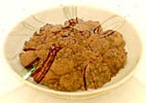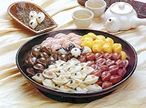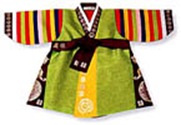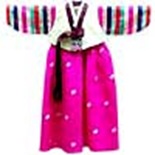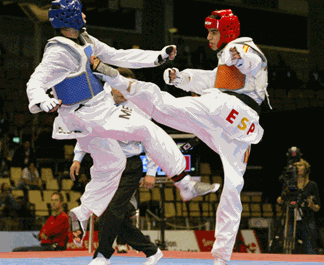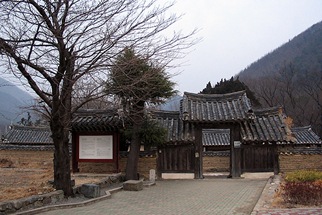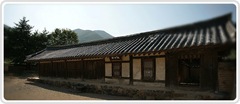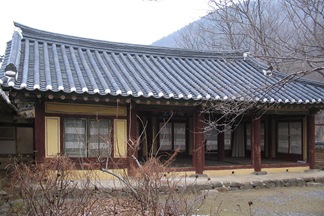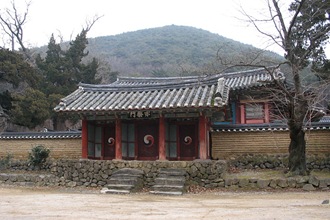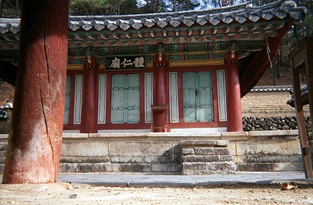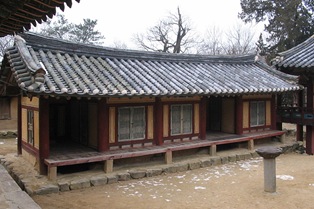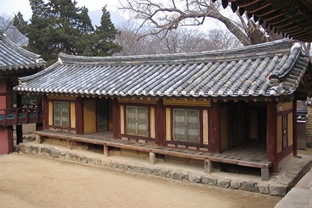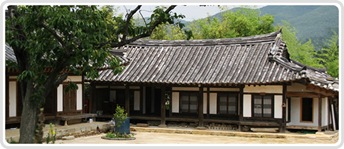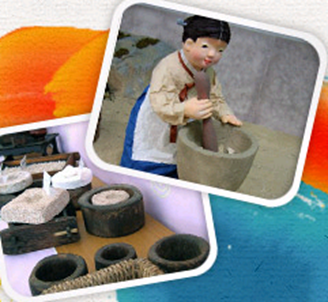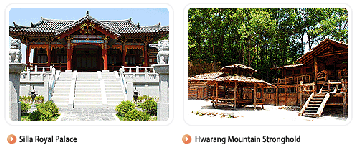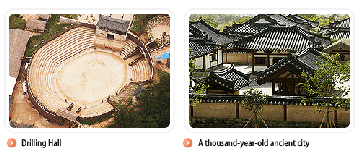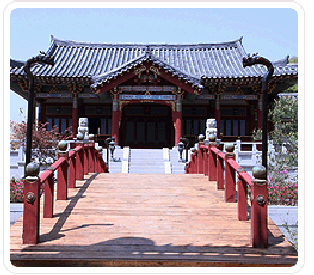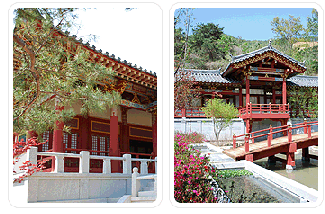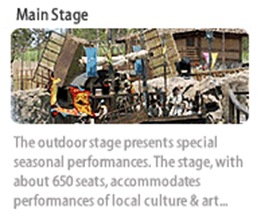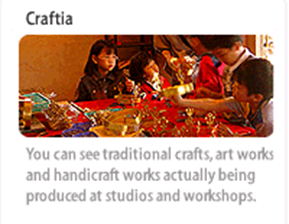Seollal has taken its toll on me, New Years always make me feel nostalgic, for the good old days. This past fortnight I was simply not in the mood for anything else but FOOD, especially festive food. I tried out a recipe for tteokguk which was quite good but I was craving for tteokbokki, the spicy stuff sold by the street vendors Pojangmacha style. I was lucky to find a recipe which turned out just like the street vendor’s. Again I was lucky to find a packet of Garae tteok in the Korean section of my supermarket, a bottle of spicy Gochujang and fishcake from my local market. Ooh, it was simply delicious!
Think Seollal and what comes to mind immediately? Food, especially eating tteokguk first thing on Seollal morning, otherwise one cannot grow a year older. I’ve said this before and I’ll say it again; there are few Korean rites in which tteok are not present in one form or another. Considering this and the impressive variety of tteoks, it’s safe to say that there is an undeniable love affair between the Korean people and tteok. I’ve been very intrigued by this “tteok culture” and that’s why today I’m going to take you on a tteok adventure discovering things about tteok.
What is tteok? Tteok is the traditional Korean rice cake which is made from glutinous rice flour and sometimes even ordinary rice flour. There are about two hundred varieties of tteok, from plain, to sweet, to rice wine flavoured, to rainbow coloured. These tteok are artfully made and sometimes look almost too pretty to be eaten.
Tteok is not only one of Korea’s most symbolic foods, but it is also one of its oldest. Korea has been producing tteok for about 2,000 years, going back to the Three Kingdom’s Period.
One has to fully understand the symbolic meanings of the Korean rice cakes, to really understand about the Korean people. Tteok has long been ingrained in the lives of the Koreans; they have always made rice cakes whether it be in good times or bad times. The shape, contents and colour may vary from region to region but the meaning is still the same. Each variety of tteok signifies different meanings The sharing of tteok among neighbours and friends has long been practiced and it reflects the warmth and kindred spirit of the Korean community. That is why the tteok has become an integral part of the lives of the Korean people. People from all walks of life can interact with each other, through these rice cakes and now I understand why the tteok plays such an important part in the lives of the Koreans.
Despite the enormous variety of tteok available, ultimately, there are only four basic methods of preparation. They are:-
- boiled Tteok: Most often encountered in gyeongdan, the small, powdered sticky rice cake balls that often come in many colors, depending on the powder.
- Steamed Tteok: Many forms of rice cake are steamed, including the Chuseok treat songpyeon.
- Pounded Tteok: Rice cake made from pounding rice with a large hammer — you can see this in action at many folk villages and folk festivals around the country. The most common pounded tteok is injeolmi.
- Fried Tteok: You can even prepare tteok in a frying pan — hwajeon, a rice cake often decorated with a flower petal design, is made this way.
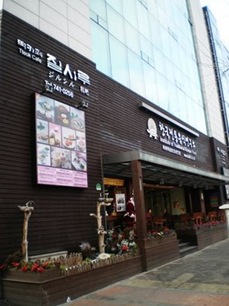
The Institute Of Traditional Korean Food, located in front of the beautiful Changdeok Palace in Jongno-gu district, is a professional research organization established and devoted to the research, development, popularization and globalization of traditional Korean food.
The building comprises of ten floors:
1. The main JILSIRU Café which offers patrons fifty types of Tteok, Hankwa
(Traditional Korean snacks) and thirty kinds of traditional Korean Teas
2. Tteok Museum-Tteokulture Exhibition
3. Tteok Museum-Tteok making methods
4. Research and Development Room Kyusudang
5. Sojubang-Recording studio
6. Sarangbang
7. Royal Kitchen
8. Culinary Department Library
9. Jilsiru-Tteok Research Room
10. Hanulchae
Professional courses offered here include the making of Tteok, Korean cookies, ritual, wedding and gift food, Royal Court food, traditional liquor and traditional tea. Terms are quarterly beginning in January, April, July and October. Night courses are also available. The total number of students enrolling during a year exceeds five thousand.
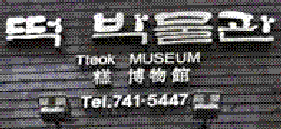
We shall be visiting the Tteok Museum on the 2nd and 3rd floors, as it is the best place to get all the information we need on tteok.
The Tteok Museum was opened in 2002, and is the only museum of its kind in Korea. The museum was opened to show people the many kinds of tteok and the disappearing tteok traditions. It is run by the Institute of Traditional Korean Food.
The Tteok Museum 1st exhibition hall displays Tteok according to the seasons, Tteok, which are enjoyed during the major holidays and festivities in Korea. Rice cake soup or tteok-guk is made on the first day of the New Year. Azalea pancakes are made on Samjit day heralding the coming of spring. Sweet coated fried stuffed cake-Juak-is made on Yudu day. Various rice cakes, especially stuffed Pine cake are made on Chuseok-the August Moon Festival-when newly harvested cereals and fruit are available and so on.
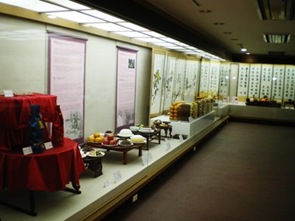
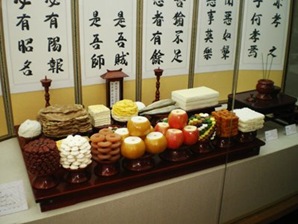
Tteok Museum 2nd exhibition hall is dedicated to tteok and other foods used for different rites of passage. Typical foods served during major events of a person from birth to death and to ancestral rites, are introduced along with the particular meaning those foods have in relation to life.
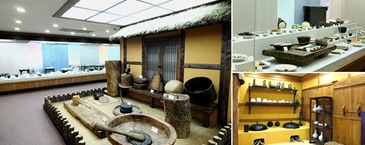
About 2,000 tteok (rice cake) related items and old Korean kitchenware in terms of theme, material and usage so as to compare food culture and kitchenware between the past and the present. The articles may not be regarded as such high-valued cultural remains but are very important due to the fact that the articles may just disappear in no time.


The displayed utensils are handmade household necessities that are ingenuous, yet reveal the lifestyle of the working class. The old cooking utensils for rice cake may be inconvenient and coarse, as compared to the modern utensils, but the name and the shape show sentiment. The elderly may relive fond childhood memories and the younger generation can experience the wisdom of their ancestors through these rare kitchen utensils.
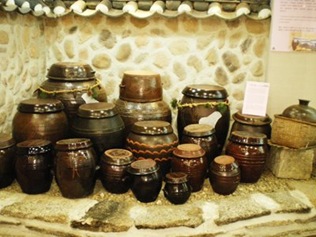
Indeed, one of the things most fascinating about the displays is the mind-boggling diversity of sizes, shapes and colours in which tteok manifests itself. And the color is important, too — quite often, rice cakes are chosen for particular occasions thanks to their colour and the role they play in Korea’s traditional yin-yang cosmology. Take, for instance, the white garae tteok commonly consumed sliced in tteokguk soup on New Year’s Day. New Year’s Day is traditionally considered a day with a lot of yang, or positive energy. White, too, symbolizes yang, hence the use of white garae tteok.
Other colours have their uses, too. Red, for instance, was commonly believed to be effective in scaring away ghosts, goblins and all other manners of things that go bump in the night. On Dongji, the winter solstice, red-bean porridge with rice cakes was served —the long night and its attendant beasties requiring culinary caution. Likewise, on the table of a first birthday, or dol, you’ll find rainbow-coloured tteok. This symbolizes the hope that the child’s dreams will grow like a rainbow.
Region plays a major role, too. Take, for instance, songpyeon, the half-moon shaped rice cakes with chestnut paste eaten during the Chuseok holiday. Its colour and even shape will change from place to place — along the North Korean coast, for instance, they take the shape of a clam shell, in the hope that the rice cakes will bring in a good catch, in that shell-fish dependent region.
The spring Dano festival, for instance, is nowhere near as celebrated as it used to be. Yet through the museum, we can learn about the unique food that used to be consumed on this important holiday, including the bright green charyunbyeong, made from a kind of marsh plant. The summer Yudu, on the 15th day of the 6th lunar month, was at one time celebrated with outings to local mountain streams and waterfalls, accompanied by fortifying meals that included sanghwabyeong rice cakes.
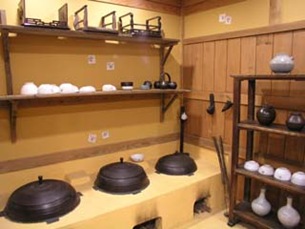
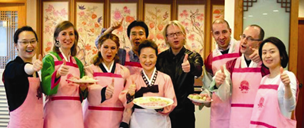
If you’re interested in doing more than just looking at the exhibits, you can also enroll in one of the Institute of Traditional Korean Food classes. The institute has classrooms on the fourth to 10th floors of the building, and offers three classes for foreigners — a tteok-making course (30,000 won), kimchi-making course (50,000 won) and traditional food making course (70,000 won). In the last one, you learn to make two kinds of food, and a translator is provided (the other two classes require the student to bring his or her own translator). You also get to wear a hanbok throughout the class.
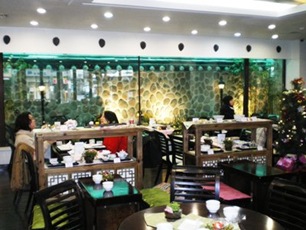
Patrons can enjoy an assortment of different tteok and cookies at the Jilsiru Tteok café. These are traditional and new recipes that have been developed by the Institute of Traditional Korean Food. Thirty different types of tea are served in this cafe.
So, now that you have seen the museum and perhaps even tasted the delicious tteok at the Jilsiru Tteok café, you will probably know a lot about tteok now as compared to before. I shall now mention the names of some of the tteok made for the different rites of passage and see whether you you can still recall them from your visit to the museum.
All Koreans go through several rituals in the course of their lives. These rituals have standardized ceremonies, and each ceremony is always accompanied by special types of food, which somehow or other will include the tteok.
Samch'il-Il is the day to celebrate the 21st day of a baby's birth. Relatives and family members get together, celebrating the birth of the newborn baby. The foods used for this celebration include miyeok guk (sea-weed soup) and baekseolgi (steamed rice cake). The baekseolgi symbolizes holiness, separating a mother and a baby from the mundane world. So on this occasion people will only share the rice cakes with their own family members, and not with neighbours and friends.
Baekil is an occasion marking the 100th day after a baby is born. One hundred is a number symbolic of completeness and maturity; therefore, baekil is an occasion for congratulating a baby on completing this phase and wishing him or her continued growth and good health for the future.
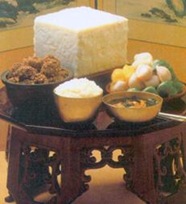
At a baekil celebration, a table is set with a bowl of plain rice, seaweed soup with beef broth and green vegetables. Steamed white rice cake, glutinous millet dumplings rolled in red bean powder and songpyeon (half-moon shaped rice cake) in five different colors are also prepared. On this day, rice cakes were shared with others. In particular, it was believed that rice cakes prepared for baekil should be shared with one hundred families in order for the baby to be blessed with good health and longevity. The families who were offered rice cakes would in turn give a bundle of white cotton thread or rice instead of returning the dish empty. White cotton thread and rice signify longevity and wealth.
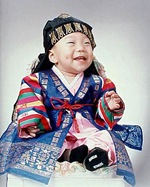
Dol or doljanchi is a Korean tradition to celebrate the birthday of a one-year-old baby. This ceremony blesses the child with a prosperous future and has taken on great significance in Korea.
The traditional celebration has four major components:-
1) Praying and giving thanks
2) Making and wearing the birthday clothes
3) Preparing the table and performing the Toljabee
4) Sharing the food with the guests and neighbours
Praying
Traditionally, Koreans would pray to Sanshin (a mountain god) and Samshin (a birth god, also called Samshin-halmuni "grandmother")

To prepare the praying table, the parents will place a bowl of steamed white rice, seaweed soup (miyeok-guk), and a bowl of pure water on the table. Next to the table are placed the samshin siru (layered red bean rice cake). This rice cake would not be shared outside the family because they believed that sharing this particular item with people outside the family would bring bad luck to the child.
After the table has been prepared, the child's mother or grandmother would pray with two hands together. Rubbing her palms together, she would ask for her child's longevity, wish luck to the mountain god, and and give thanks to the birth god. This would be acomppanied by repeated bowing. Male family members would not be allowed to join in this ceremony. Only female family members would be allowed to participate.
Seoulites perform this ceremony early in the morning on the child's birthday whereas residents of some other areas do it the night before the birthday.
The clothes worn for the tol (tol-bok) are colorful, dressy clothes. They differ depending on the child's sex. Both boys and girls wear a long tol-ddi (a belt that wraps around the body twice) for longevity and a tol-jumuni (pouch) for luck. Silk cloth is used to make the tol-jumuni, folded at the top with a colorful thread pull-string to open and close. For the child's longevity buttons are not used.

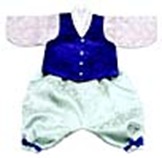
Boy's Clothes
-pink or striped jogori (jacket) with puple or gray paji (pants)
-striped durumagi (long jacket) and a blue vest printed with a gold or silver pattern or a striped magoja (jacket) and a jonbok (long blue vest) with a gold or silver pattern and a hongsadae (traditional belt) over it
-bokgun (black hat with a long tail)
-tarae-busun (traditional socks)
-yumnang (traditional round shaped pouch)
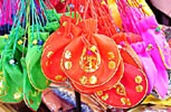
Girl's Clothes
-striped jogory (jacket)
-long, red chima (skirt)
-gold and silver printed jobawi (hat)
-tarae-busun (traditional socks)
-yumnang (traditional round shaped pouch)
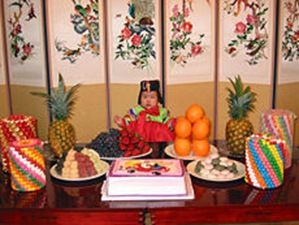
The parents prepare a special Tol table to celebrate the child's birthday. The main food includes tteok (rice cakes) and fruits. Over 12 different kinds of tteok are prepared, including baekseolgi (white steamed rice cakes), susu-kyongdan (rice cakes coated with rough red bean powder), chapsal-tteok or chal-tteok, mujigae-tteok (rainbow colored steamed rice cake), songp'yeon (half moon shaped rice cakes), injeolmi (coated glutinous rice cakes), and gyep'i-tteok (puffed air rice cakes). Among these, baekseolgi and susu-kyongdan are always included. Fruits can vary according to the season of the birthday. Different colors of seasonal fruits can be prepared and displayed in a row. Also, a bowl of rice, seaweed soup, and many other various foods can be displayed.
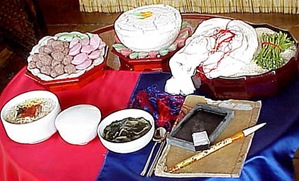
Along with food, other items are needed for holding the Toljabee event. Items such as a large bundle of thread, a brush, a Korean calligraphy set, pencil, book, money (10,000 won bills), bow and arrow (needle, scissors, and ruler for girls) are arranged on the table to predict the child's future.
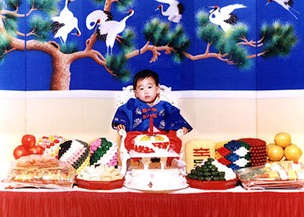
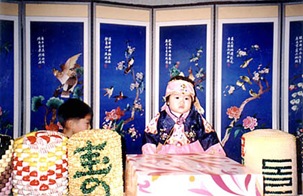
The birthday child will be placed at the table so that the other guests can face him or her. Parents often sit the child on the bolou (Korean traditional mattress) and several bangsuk (Korean cushions). Since the child is small, this allows for getting better pictures. For the background, a Korean traditional screen is used at the hotel or other banquet hall.
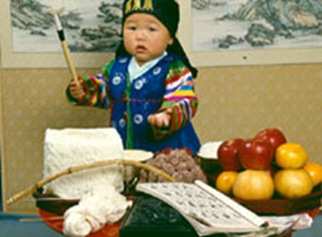 Toljabee Event
Toljabee Event In this event, the birthday child goes around the table and picks up items that attract him or her. The child's future is predicted according to what he or she grabs. After placing the child in front of the table, the child's father becomes the guide for the child to go around the table and grab whatever he or she wants. The first and second items the child grabs are considered the most important. Usually Korean parents place the items that they want the child to choose near to the edge of the table. The child's future is predicted according to the items:-
- bow and arrow: the child will become a warrior or have a military career
- needle and thread: the child will have a long life
- jujube: the child will have many descendants
- book, pencil, or related items: the child will become a successful scholar
- money or rice: the child will become rich
- ruler, needle, scissors: the child will be talented with his/her hands
- knife: the child will be a good cook
- cakes or other foods: the child will be a government official
Sharing
After the Toljabee, the parents share most of the Tol food with the guests and relatives. It is a Korean custom that when the guests and neighbours receive the food they say kind words and wish for the child's longevity and good fortune. They also give presents such as a gold ring, clothes, or toys.
Ch'aekryae (Text Completion Party)
This ritual has disappeared these days. In the past, when a child went to a Korean traditional type of school (seodang) and finished studying a book, the mother usually brought rice cakes and other foods that she prepared to celebrate. The teacher and other students shared the foods together. The rice cake used on this occasion was a small sized osaek songp'yeon.
The wedding ceremony is one the most important events in one's life, marking the uniting of a man and a woman as husband and wife. According to tradition, before the wedding the bridegroom's family sends a box containing chaedan (wedding presents sent by the bridegroom's family for the bride's family) and a written marriage oath to the family of his bride. This box is called ham. Once the ham arrives at the bride's house, it is placed atop a rice-cake steamer in which bongchaetteok (steamed glutinous rice cake sprinkled with red bean powder) has been prepared and opened only after the family has bowed twice to the north.
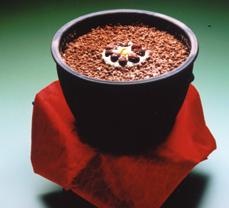
Bongchaetteok is made with three measures of glutinous rice to one measure of red beans. The ingredients are placed in separate layers in a steamer, with the beans forming a topping upon which are placed seven jujubes in a circle at the centre.
Bongchaetteok is prepared to wish the couple a relationship that is as fast and tenacious as the glutinous rice that it is made from. The rice cake has two layers to symbolize a couple. The red beans are to ward off misfortune whereas the seven jujubes represent seven sons to wish the couple many sons and prosperity.

The Hwaegap, or 60th birthday, has also been considered an especially important birthday celebration, for this is the day when one has completed the zodiacal cycle. In addition to the 12 animals are the 5 elements: Wood, Fire, Earth, Metal, and Water. Together, they form a 60-year (12 x 5) cycle in which the world moves. As such, a person's 60th birthday represents an extra special occasion. Even more important is the fact that, in the past, before the advent of modern medicine, not many people lived to be 60 years old.
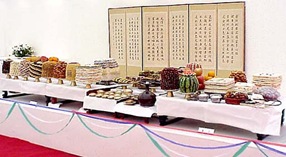
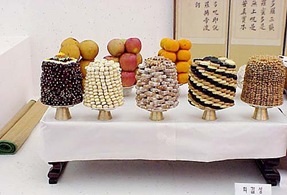
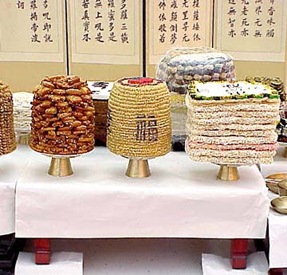
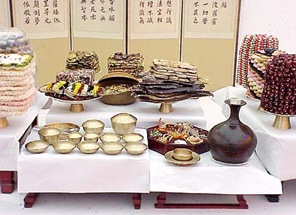
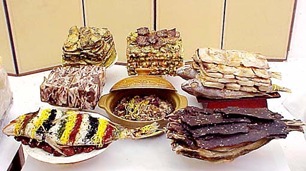
A Hwaegap was therefore a time of great celebration when children honour their parents with a large feast and much merrymaking. . Relatives (usually led by the wife of the eldest son) prepare a big birthday table. They must set a sumptuous table of food called mansang, which means "a table to gaze at." This is the most extravagant of Korean table-settings. Fresh fruit, pan-fried fish, dried beef or fish, rice cakes, traditional Korean baked goods and many other foods are piled in 30-60 centimeter-tall round stacks, which are then placed in 2-3 colorful rows. Rice cakes include injeolmi (square rice cakes coated with bean flour), kaksackpyun (rice cakes with different colours), and julpyun.
With the parents seated at the main banquet table, sons and daughters, in order of age, bow and offer wine to their parents. After the direct descendants have performed this ritual, the father's younger brothers and their sons and then younger friends pay their respects in the same manner. While these rituals are being carried out, traditional music is usually played and professional entertainers sing songs, urging people to drink.
Family members and relatives indulge in various activities to make the parents feel young, often dressing like small children and dancing and singing songs. In the old days, guests would compete in composing poetry or songs in celebration of the occasion.
In the past, years after the 60th birthday, were regarded as extra years and although subsequent birthdays called for a celebration, they were not observed as lavishly as the Hwaegap party. Upon the 70th birthday, or "gohui," meaning old and rare, another celebration equal in scale with the Hwaegap was celebrated.
And with this I end my little adventure into “tteok culture.” I shall write about the rites for the festivals and ancestral worship as well as the tteok of other regions in my next post. So if you want to know more do stop by again.But do please leave some comments so that I know whether you like my posts or not. I would also like to know if you prefer me to write on Korean Culture or Korean Tourism.
Special thanks and appreciation to the following:
Photos and articles © courtesy:
http://www.korea.net/News/News/NewsView.asp?serial_no=20070216027
http://www.lifeinkorea.com/Images/Food/Kyju362.jpg
http://www.lifeinkorea.com/culture/tol/tol.cfm
http://www.lifeinkorea.com/culture/ricecake/ricecake.cfm
http://www.lifeinkorea.com/culture/tol/tol.cfm?xURL=clothes
http://english.visitkorea.or.kr/enu/SI/SI_EN_3_6.jsp?cid=630938 other.html
http://www.koreanculture.org/06about_korea/symbols/23rites_passage.htm
http://www.kfr.or.kr/eng/index.htm
http://en.wikipedia.org/wiki/Tteok#Steamed_tteok
http://joongangdaily.joins.com
http://www.7luck.com/en/header/webzine/webzine_gisa.jsp?seq=850

